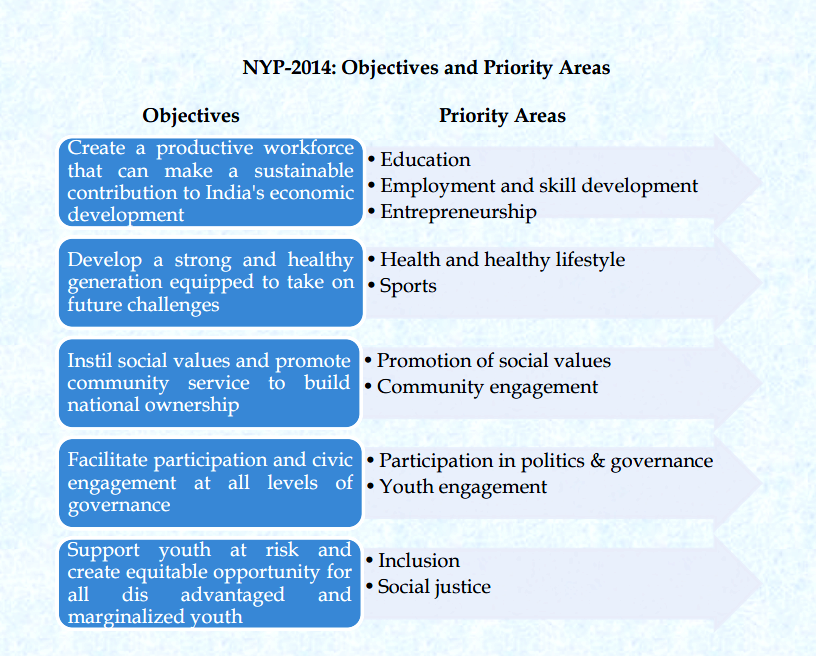Social Justice
Youth in India 2022 Report
- 13 Jul 2022
- 5 min read
For Prelims: Demographic Dividend, Mortality Rate, Fertility Rate, Elderly, Social Security
For Mains: Youth in India 2022 Report
Why in News?
Recently, the Ministry of Statistics and Programme Implementation (MoSPI) has released ‘Youth in India 2022’ Report, which shows that the population share of the youth is starting to decline whereas the share of the elderly is expected to increase during 2021-2036.
- A sustained drop in fertility has led to an increased concentration of the population at working ages (between 25 and 64 years) and this shift in the age distribution provides a time-bound opportunity for accelerated economic growth known as the “Demographic Dividend”.
What are the Findings of the Report?
- Decline in Youth Population: The youth population is expected to increase initially but will start to decline in the latter half of 2011-2036 period.
- The total youth population increased from 222.7 million in 1991 to 333.4 million in 2011 and is projected to reach 371.4 million by 2021 and, thereafter, decrease to 345.5 million by 2036.
- Proportion of Youth and Elderly Population: Proportion of youth to the total population had increased from 26.6% in 1991 to 27.9% in 2016 and then projected to start a downward trend and to reach 22.7 % by year 2036.
- On the contrary, the proportion of elderly population to the total population has increased from 6.8% in 1991 to 9.2% in 2016 and is projected to reach 14.9% in 2036.
- Scenario in the States: States such as Kerala, Tamil Nadu and Himachal Pradesh are projected to see a higher elderly population than the youth by 2036.
- Bihar and Uttar Pradesh experienced a rise in proportion of youth population to total population till 2021 and then it is expected to start declining.
- These two states, along with Maharashtra, Madhya Pradesh and Rajasthan, are projected to have over half (52%) of the country’s youth.
What are the Implications?
- India is experiencing a demographic window of opportunity, a “youth bulge”. However, youth come across various development challenges viz. access to education, gainful employment, gender inequality, child marriage, youth- friendly health services and adolescent pregnancy.
- Youth bulge refers to a demographic pattern where a large share of the population is comprised of children and young adults.
- A greater proportion of youth at present will result in a greater proportion of elderly in the population in future. This will create a demand for better healthcare facilities and development of welfare schemes/programmes for elderly people.
- Rise in the share of elderly population will put pressure on social security and public welfare systems and the next 4-5 years need to be utilised well to accelerate productive job creation.
- People, typically in informal employment, don’t have social security, it will add burden to the respective state.
What are the Recommendations?
- There is need to increase share of employment in manufacturing because people who in current labour force, when they are retire and the share of elderly starts rising in very populous states, then it will be like a ticking time bomb (a situation that is likely to become difficult to deal with or control).
- In the next 4-5 years, there is a need for active labour market policies to be adopted to accelerate productive job creation.
- There is a need to take steps to adapt public programmes to the growing proportion of older persons, including by improving the sustainability of social security and pension systems and by establishing universal health care and long-term care systems.
What are the Schemes Related to Youth?
- Pradhan Mantri Kaushal Vikas Yojana
- YUVA: Prime Minister’s Scheme For Mentoring Young Authors
- Integrated Child Development Services (ICDS) Scheme
- National Health Mission (NHM)
- National Youth Policy-2014
- National Skill Development Corporation
- Rashtriya Yuva Sashaktikaran Karyakram Scheme
- Weekly Iron Folic Acid Supplementation Programme (WIFSP)
- Scheme for Promotion of Menstrual Hygiene among Adolescent Girls.





